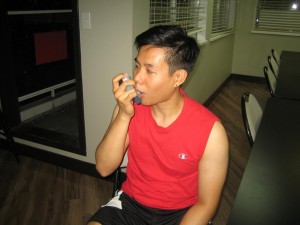
One of the most basic survival skills a person needs to learn is CPR and first aid. CPR stands for cardiopulmonary resuscitation, used when cardiac arrest happens. Cardiac arrest is dangerous because the heart stops beating, halting the flow of oxygenated blood to the rest of the body. With out oxygen, the tissues can produce enough energy to function adequately. This can lead to multiple-organ failure; brain death is one of the most dangerous and irreversible complications.
You can visit our location webpages for a list of all available classes; basic, advanced, and re-certification classes are clearly outlined in the list, with their respective rates and schedules. All our training locations have the same set of courses offered, although the schedules may vary per location.
CPR and first aid training centers: San Francisco CPR, Los Angeles CPR, Honolulu CPR, Las Vegas CPR, Seattle CPR, Portland CPR
A look into cardiac arrest statistics
Cardiac disease, specifically ischemic heart disease, is the number one cause of death in the entire world. It kills more than half a million Americans each year, with a quarter of that dying from cardiac arrest. Even more worrying is that almost 400,000 cardiac arrests happen outside the hospital – meaning the first responders are usually bystanders. This is where CPR comes in handy. Everyone should be aware of these statistics because the major factors that contribute to the development of heart disease are lifestyle related.
First aid numbers and statistics
According to studies done on emergency situations, there are thousands of people dying each year due to a condition that could’ve been handled with efficient first aid. Statistics show that there are almost 2,500 people who die from asphyxiation (choking on something). Because all our programs include first aid, rescuers who train with us will learn how to manage emergency situations such as choking, bleeding, and fall emergencies.
Training programs

There are two main training categories: Basic Life Support and Advanced Life Support, with several programs with accompanying re-certification classes. Programs with an asterisk have r-re-certification available. We have one program for lay persons (non-health care workers), with the rest for HCPs.
BLS
- Heartsaver CPR – for the general public (4 hours)
- Heartsaver CPR C – for HCPs (4.5 hours)
- Basic Life Support for HCPs (4.5 hours/4 hours*)
ALS
- Advanced Cardiac Life Support (16 hours/5-6 hours*)
- Pediatric Advanced Life Support (14 hours/ 6-8 hours*)
Certificates
Once the student finishes the training program, we award him or her with a certificate that expires after two years. It can be renewed (before its expiration) through the accompanying re-certification class of the original training program. Re-certification classes are much shorter than the training program; the latter becoming the only choice for renewal for rescuers who let their credentials expire.
